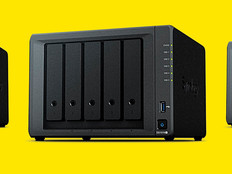What’s Driving K–12 Schools to the Cloud?
One week after installing a new wireless network at Fort Worth (Texas) Academy, a private K–8 school of 200 students, Associate Head of School for Operations Darryl Loy was notified of a problem with the network. The fact that he was attending an out-of-state conference that day could have been its own problem.
But in practice, it wasn't a problem at all. "I opened my tablet, navigated to the management website and was able to fix the issue remotely, in real time," Loy recalls.
Welcome to the new world of wireless networking in the cloud.
Schools and districts of all types and sizes face unique budgetary, personnel and space or configuration constraints. They also have educational delivery models that require flexible infrastructure, such as carts that can be transported between classrooms to make wireless devices available on demand. Such factors increasingly prompt K–12 IT departments to migrate to the cloud, which offers a range of benefits — reduced onsite infrastructure and maintenance and lower costs among them.
Experts say the personnel costs and management demands of maintaining wireless infrastructure on-premises go beyond what most schools can absorb, making the cloud an appealing option — not only for wireless, but also for switches, security gear and applications (see sidebar, "Soaring into the Cloud, with Apps").
"Because cloud is providing a management as a service framework, charges can be based on episodes or incidents, not burdened by a mammoth capital cost," says Tom Nolle, president and founder of CIMI, a networking consultancy based in Voorhees, N.J. "The cloud makes the process of managing much closer to the level of cost and technical expertise that an organization like a school can reasonably handle."
Anytime, Anywhere Management
Indeed, remote monitoring and problem resolution are key reasons why Fort Worth Academy chose cloud-based wireless, security and switching solutions from Meraki, which has since been acquired by Cisco Systems. Simple configuration processes also were important to the school, which began looking to upgrade its existing consumer-grade wireless gear in mid-2011 and did so in mid-2012. According to Loy, FWA needed more bandwidth for demanding educational apps, as well as easier deployment and greater management flexibility. With configuration controls living in the cloud, school staff can tap into that intelligence from a web browser.
The Meraki management console simplifies network design by allowing users to determine the optimal placement and configuration of wireless access points on a campus map that integrates with Google Maps. The solution continuously monitors bandwidth consumption so that administrators can adjust the available capacity to an individual AP or area of campus. It also issues proactive alerts if a given piece of hardware isn't working or if a rogue wireless device is attempting to access the network.
1,350 Number of Chromebook computers that Queensbury Union Free School District has purchased for its cloud-based Google Apps initiative
What's more, the drop-down configuration menus don't require any vendor-specific knowledge. "We turned it on, and it worked," says Josh Garza, FWA's IT specialist.
Other districts using cloud-based networking note that the ability to manage the systems from anywhere has significantly improved their IT operations and flexibility.
Bremerton School District 100-C, for example, has a cloud-based wireless network with more than 200 Meraki access points.
In the past, problems required "dragging out the 1,000-page manual to find the checkbox you needed," then taking corrective action onsite, explains Steve Bartlett, technology services supervisor for the 12-school district in Bremerton, Wash. In the cloud model, by comparison, he can resolve problems quickly through the management console and its more intuitive processes.
Matthew Hladun, director of technology for Queensbury Union Free School District, a four-school, single-campus K–12 district in Queensbury, N.Y., confirms that Meraki's cloud-based wireless equipment and switches have changed the very nature of his work.
"You don't feel tethered to one location," Hladun explains. "If you're out in a building and a problem crops up, you don't have to run back to the office to address it. You have a full management console available with Meraki anytime, anywhere."
To wit, the district's network coordinator, Bernie Capron, recently addressed a network problem from a mobile device — while in Florida on vacation. "We control our switches and our wireless through that single app," Capron says.
Cloud Helps School Districts Get Back to Basics
Above and beyond infrastructure and IT considerations, cloud-based systems are helping districts refocus on their mission by enabling IT pros to redirect time and resources to hands-on technology that facilitates education. Bremerton School District, for example, leverages cloud-based wireless to support mobile devices as part of its iLearn Project, which strives to maximize literacy and engagement by equipping students with mobile devices to perform research and drive their own education more directly.
Cloud-based wireless "freed up capital that allowed us to invest in more technology that had a very visible impact in the classroom," Bartlett explains. "A new Microsoft Exchange server doesn't really give parents pause. But when parents see that their kids are excited to come to school, it makes a big difference."
Soaring into the Cloud, with Apps
Historically, school districts have relied on Microsoft Office for word processing, email and other functions while also investing heavily in education-specific instructional and administrative technologies.
Today, many are transitioning to applications hosted in the cloud. In some districts, cloud-based apps actually came first.
Bremerton School District 100-C in Washington, for instance, migrated to Office 365 more than three years ago for a very practical reason: It was free. The move not only eliminated the $20,000 annual software licensing fee the district once paid, it also eliminated time-consuming tasks such as operating system updates and security patch installations, says Technology Services Supervisor Steve Bartlett.
Cloud-based apps also have freed him to focus on educationally driven technology initiatives, such as outfitting students with personal devices that facilitate learning.
Matthew Hladun, director of technology for New York's Queensbury Union Free School District, also is in the process of migrating toward cloud-based apps. The district's dated versions of Office will no longer be supported after next year — at which point the vast majority of students and staff will transition to Google Apps, he says.
Opting for Chromebooks "was one of the most fulfilling decisions we've made, in terms of their speed, capabilities and ease of management," Hladun says. "We're also saving money because we're not spending as much time troubleshooting PCs."







